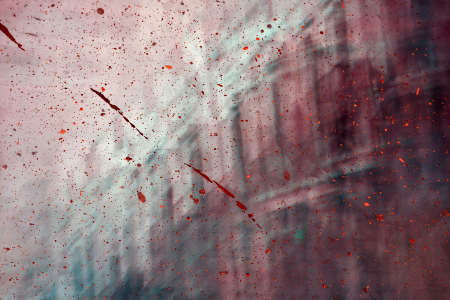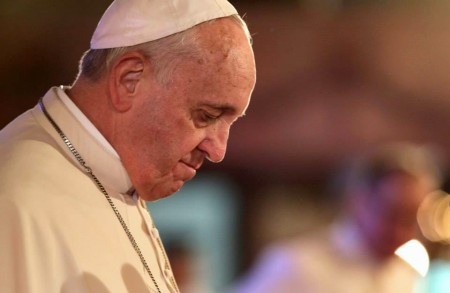 Hi readers, it seems you use Catholic Online a lot; that's great! It's a little awkward to ask, but we need your help. If you have already donated, we sincerely thank you. We're not salespeople, but we depend on donations averaging $14.76 and fewer than 1% of readers give. If you donate just $5.00, the price of your coffee, Catholic Online School could keep thriving. Thank you. Help Now >
Hi readers, it seems you use Catholic Online a lot; that's great! It's a little awkward to ask, but we need your help. If you have already donated, we sincerely thank you. We're not salespeople, but we depend on donations averaging $14.76 and fewer than 1% of readers give. If you donate just $5.00, the price of your coffee, Catholic Online School could keep thriving. Thank you. Help Now >
Jacques Cartier
FREE Catholic Classes
The discoverer of Canada, b. at Saint-Malo, Brittany, in 1491; d. 1 September, 1557. Little is known of his youth, but it is probable that he followed some of his countryment on their adventurous expeditions to Newfoundland or to Brazil. Cartier offered his services to Philippe de Chabot, Seigneur de Brion and Admiral of France, at a time when Francis I was about to renew those attempts at French colonization in which Thomas Aubert (1508), Jean Denys (1506), the Baron de Léry (1528), the brothers Parmentier (1520) and Verrazano the Florentine (1523) had been the principal agents. His reputation as a mariner marked him out forf preferment. Two small ships of sixty tons, equipped with sixty men each, were placed at his disposition; he set sail, 20 April, 1534, from Saint-Malo, and in twenty days made Cape Bonavista, Newfoundland. Continuing his explorations northwards, Cartier entered the Strait of Belle Isle and explored the coast of Labrador as far as Brest, then, turning south, followed western coast of Newfoundland as far as Cape St. John. He then sailed towards the Magdalen Islands, which, as well as Prince Edward Island, he sighted, and advancing towards the west, he visited the entrance of the Miramichi River, Chaleurs Bay and Gaspé Basin. Thence, crossing the estuary of the St. Lawrence to the northern coast, he shaped his course back to France.
We ask you, humbly: don't scroll away.
Hi readers, it seems you use Catholic Online a lot; that's great! It's a little awkward to ask, but we need your help. If you have already donated, we sincerely thank you. We're not salespeople, but we depend on donations averaging $14.76 and fewer than 1% of readers give. If you donate just $5.00, the price of your coffee, Catholic Online School could keep thriving. Thank you.Help Now >
The first voyage lasted 137 days. On his return, Cartier made a circumstantial report of his expedition, and next year the king offered him a commission to continue his exploration. Three ships, fitted out with 110 men, set sail 26 May, 1535, and this time determined to attempt the ascent of the great river, Cartier went up as far as Hochelaga (Montreal), returning to pass the winter at Stadacona (Quebec), near which were four or five Indian villages. Having entrenched himself at the mouth of the River Lairet, a tributary of the Sainte-Croix, he was able to live quietly during the winter, but unfortunately the scurvy broke out among his companions of whom twenty-five died. After planting a cross on the spot where they had wintered, Cartier sailed for France (6 May). He arrived safely at Saint-Malo, 16 July.
During a third voyage to Canada, undertaken in the year 1541, with five ships, Jacques Cartier passed the winter at the entrance of the River Cap-Rouge, fortifying his position for fear of being molested by the neighbouring savages. At this place, which he named Charlesbourg-Royal, Cartier awaited the arrival of the Sieur de Roberval, whom the king had charged to colonize Canada (1540). However, the spring having arrived without Roberval, Cartier thought it wise to return to France. Reaching Newfoundland, he met Roberval, who wished him to return to Canada. Cartier, however, persisted in setting sail for France, and the issue of Roberval's attempts at colonization afterwards justified the conduct of the discoverer of Canada. The King of France, as solicitous as was Cartier himself for the safety of Roberval, resolved to send an expedition to his relief. Cartier assumed command of this expedition, and hence his fourth voyage (1543) of which we have no details. After that he crossed the sea no more, but retired to his manor of Limoilou, near Saint-Malo, where he remained until his death.








 Daily Readings for Friday, April 19, 2024
Daily Readings for Friday, April 19, 2024 St. Alphege: Saint of the Day for Friday, April 19, 2024
St. Alphege: Saint of the Day for Friday, April 19, 2024 Stewardship Prayer: Prayer of the Day for Friday, April 19, 2024
Stewardship Prayer: Prayer of the Day for Friday, April 19, 2024


